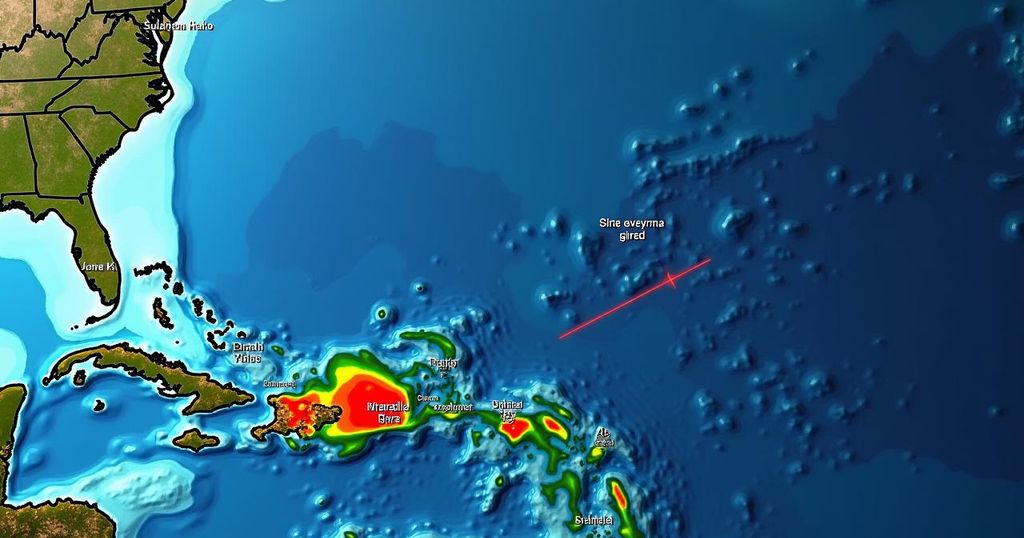Tropical Storm Milton: Projected Path and Impacts on Florida
Tropical Storm Milton has developed in the Gulf of Mexico, threatening Florida with hurricane-strength winds and rain expected by Wednesday. It is the 13th named storm of the season, following Hurricane Helene, which caused over 220 deaths. With the hurricane season peaking soon, forecasts indicate a potentially severe season with numerous storms predicted.
Tropical Storm Milton has emerged in the Gulf of Mexico and is forecasted to bring significant hurricane-strength winds and rainfall to Florida by Wednesday, as reported by the National Hurricane Center on Saturday. This storm is the 13th named storm of the current hurricane season. Typically, the impacts of hurricanes and tropical storms can be felt well beyond the area where the storm makes landfall. Should Milton maintain its current trajectory and fortify into a hurricane, it will be the second storm to strike Florida within a two-week period, following Hurricane Helene, which made landfall as a Category 4 storm. Helene has been linked to over 220 fatalities along its path, stretching from Florida to Virginia. The formation and intensification of a hurricane require specific environmental conditions. Meteorologists focus on the wind speed of a cyclone to classify it; when the wind speeds reach 39 mph for at least one minute, it is classified as a tropical storm and awarded a name. Upon reaching 74 mph, it is categorized as a Category 1 hurricane, with further classifications up to Category 5. These categorizations assist in assessing potential hazards and damage, facilitating informed warning systems regarding strong winds, high waves, torrential rains, and flooding once the storm makes landfall. Tropical storm-force winds pose a substantial danger, while hurricane-force winds have the potential to demolish structures and create highway debris. Furthermore, these winds can drive seawater out to land, resulting in storm surges — the predominant cause of hurricane-related fatalities in the United States, as indicated by the National Weather Service. As the storm advances inland, flooding becomes a critical threat, often delivering over six inches of rainfall, which can overwhelm drainage systems and saturate the ground, leading to flash floods, with risks persisting for days post-storm. Historically, the hurricane season experiences its peak around mid-September, and meteorological predictions suggest that this season could be one of the most severe in decades, with forecasts estimating between 17 to 25 tropical storms, of which four to seven may escalate into major hurricanes.
The formation of hurricanes is dependent on a combination of several atmospheric and oceanic conditions. The National Hurricane Center monitors the tropical cyclones, analyzing their wind speeds to classify them accordingly. Understanding these classifications is vital for public safety and readiness, as each category signifies increasing levels of potential damage. With the historical context of hurricane seasons being especially tumultuous around September, forecasters utilize gathered data to predict the likely occurrences and impacts of upcoming storms, including potential fatalities and property damage.
Tropical Storm Milton poses a significant threat to Florida, with the potential to grow into a hurricane by mid-week. As we brace for the impacts associated with such storms—ranging from wind damage to flooding—it remains essential to heed warnings and understand the risks involved. With the hurricane season expected to yield several storms, the community must stay informed and prepared for emergent weather conditions and their repercussions.
Original Source: www.washingtonpost.com




Post Comment